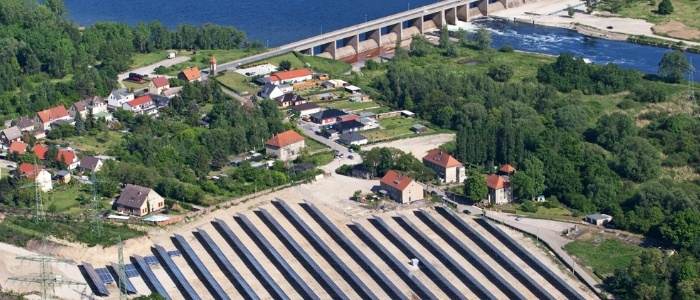By Anh Tuan Nguyen, Intern, aream Group
What will the world of tomorrow look like? What do energy systems look like with which the Paris climate goals can be achieved? Although there are many concepts for the future, it is becoming increasingly clear that hydrogen is one of the central positions in them - so important that the European Commission has declared the topic one of six from an "Important Project of Common European Interest".
The role of hydrogen
As an energy storage medium, hydrogen is considered one of the most important technologies for the energy turnaround. The idea behind it: Energy from solar and wind power plants is stored in hydrogen by electrolysis and further processed in due course. Denmark is currently working on the world's largest hydrogen project off the coast of Copenhagen. Energy from off-shore wind turbines is stored in hydrogen in a 1.3 GW plant and made available for further applications.
Another prominent application of hydrogen is its role in fuel cells. Separated by an electrolyte membrane, the hydrogen in the anode reacts with the atmospheric oxygen in the cathode - electrolysis is reversed. This process generates electrical energy and water in a CO2-neutral manner. The Audi automotive group has been experimenting in this area since 2014 with hydrogen concept models such as the h-Tron. So far, however, no Audi model has been ready for series production against the background of the electric offensive.
Function of a fuel cell:

Source: https://de.wikipedia.org/wiki/Brennstoffzelle, 10/12/2020
A hydrogen color theory
The "green" hydrogen is particularly relevant for the energy turnaround. This is produced from water by electrolysis, using only electricity from renewable sources. Thus, the production of hydrogen is CO2-free.
"Grey" hydrogen, on the other hand, is produced from fossil fuels. The CO2 is then released unused into the atmosphere, thereby increasing the global greenhouse effect.
"Blue" hydrogen is "grey" hydrogen, whereby the CO2 is separated and stored during its production. The CO2 produced during hydrogen production therefore does not enter the atmosphere, so this hydrogen can be considered CO2-neutral.
The potential of hydrogen for climate and economy
All forecasts assume a huge market for hydrogen already at the end of the decade. Japan expects a six-fold increase in the demand for hydrogen in the domestic economy by 2030. The strategy consultancy McKinsey & Company calculates in a study from 2018 that the market for hydrogen and its applications will amount to five trillion US dollars in 2050 and cover 13 percent of the worldwide energy demand. Goldman Sachs and the Bank of America underline this statement with studies and state that industrialized countries and leading emerging markets are aiming for 25 percent of global energy demand with hydrogen and that the market would be at 2.5 trillion US dollars (without applications). These assumptions are also reflected in the stock market: The share prices of the three leading hydrogen producers Ballad Power, Nel Asa and PowerCell Sweden increased on average by 150 percent compared to the previous year.
The cost of hydrogen will fall faster than previously assumed
Sinking costs should pave the way to the future trillion markets. The international organization Hydrogencouncil, which consists of 92 leading companies from the energy, transport, industrial and financial sectors, forecasts cost degression of more than 60 percent by 2030. In addition, in their current study on the competitiveness of hydrogen they assume that in some sectors such as mobility, savings of more than 70 percent are possible through learning and economies of scale.
Increasing competitiveness makes the applications more attractive. In this year's hydrogen study McKinsey expects economically viable applications such as fuel cell powered trucks, buses and trains to be available as early as 2025. In urban mobility from 2025 to 2030 hydrogen-powered SUVs and cabs will become more energy efficient than diesel and electric vehicles. For smaller passenger cars, electric mobility will probably remain the more intimate alternative, especially in cities. In households, radiators will also become competitive. Due to the much more complex applications in industry, hydrogen will probably not be usable there until 2030.
Politicians see great opportunities in hydrogen
The National Hydrogen Strategy, which was adopted by the Federal Ministry of Economics and Energy in the middle of the year, provides for a nine billion Euro funding program. The technology is to support further decarbonization in the course of the energy turnaround and to put German research institutes and companies in an international pioneering role through 38 measures.
In addition to the national strategy, there are other strategies and initiatives at state level: The German federal state Hessen, for example, is pursuing a hydrogen initiative by merging companies, universities and research institutes. Key topics include the expansion of the infrastructure and investments in the mobility sector. The federal states of Bremen, Hamburg, Mecklenburg-Western Pomerania, Lower Saxony and Schleswig-Holstein have joined forces in the North German Hydrogen Strategy. The aim is to develop Northern Germany into a hydrogen hub. To this end, investments are to be made in electrolysis lines of 500 MW by 2025 and at least five GW by 2030.
Hydrogen also has a special significance on a European level: The European Commission declared the technology to be one of the six "Important Project of Common European Interest". In a European alliance under the leadership of Germany the topic is to be further promoted and implemented in infrastructure projects. The investment estimate at the first kick-off in July 2020 was 430 billion euros.


